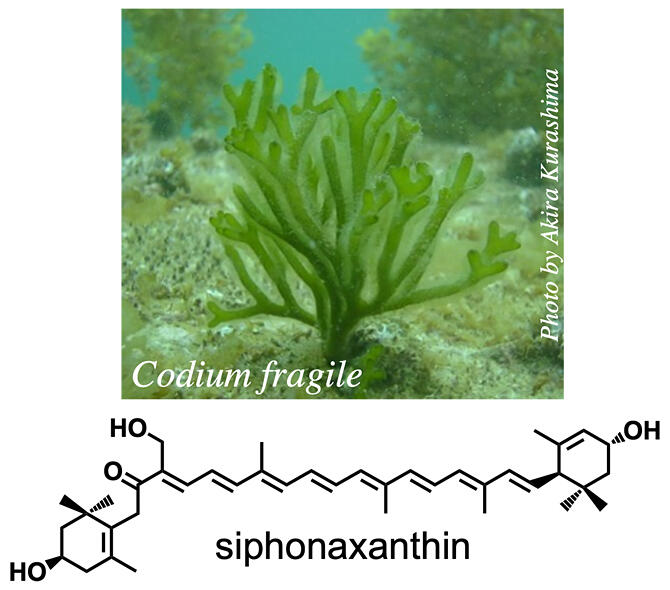A research group led by Associate Professor Ritsuko Fujii of the Research Center for Artificial Photosynthesis, Osaka Metropolitan University, graduate student Soichiro Seki of the Graduate School of Science, Osaka City University, Professor Genji Kurisu of the Institute for Protein Research, Osaka University, and Dr. Pu Qian of Thermo Fisher Scientific Inc., has used cryogenic electron microscopy to analyze a marine green macroalga to identify, for the first time, the structure and binding environment of the pigment within a protein called a photosynthetic antenna, and reveal in detail the molecular mechanism by which blue-green light, the only light available in seawater, is efficiently used for photosynthesis.

Provided by Ritsuko Fujii, Osaka Metropolitan University
Codium fragile is a dark green seaweed that originated in Japan and now thrives on the coasts around the world. Its unique color has been a mainstay since ancient times. The seaweed's color comes from a pigment in the "photosynthetic antenna," a protein that concentrates sunlight and causes a substance-producing reaction, which allows photosynthesis in the ocean where only the weak blue-green light of sunlight is available.
The group obtained the structure of the photosynthetic antenna of the seaweed through high-resolution cryo-electron microscopy, revealing the structure of siphonaxanthin and the sites where chlorophyll b replacement occurred. Siphonaxanthin is heavily twisted and forms hydrogen bonds in two places with surrounding proteins. The structure of this antenna suggested it was the key to siphonaxanthin's absorption of green light.
The group successfully detected the difference between chlorophyll a and chlorophyll b, and partially identified the site where chlorophyll is replaced. This allowed for a larger area of chlorophyll b clusters arranged next to each other, providing the pigment coordinate information needed to reveal the mechanism by which blue-green light is efficiently utilized for photosynthesis.
"This is the first step toward solving the mystery of how the seaweed's photosynthetic antenna efficiently collects blue-green light," commented Fujii. "We want to develop devices that use sunlight efficiently by imitating this mechanism. We hope this advances research on ways to increase the production of blue carbon (carbon captured by marine ecosystems) while being ecologically sound."
■ Siphonaxanthin: A unique carotenoid pigment with specific functional groups (OH and C=O groups) that accumulates only in some marine green algae.
■ Chlorophyll: A pigment found in almost all oxygen-producing photosynthetic organisms. There are few structural differences between chlorophyll a and b but they absorb different wavelengths of light.
Journal Information
Publication: BBA Advances
Title: Structural insights into blue-green light utilization by marine green algal light harvesting complex II at 2.78 Å
DOI: 10.1016/j.bbadva.2022.100064
This article has been translated by JST with permission from The Science News Ltd. (https://sci-news.co.jp/). Unauthorized reproduction of the article and photographs is prohibited.




